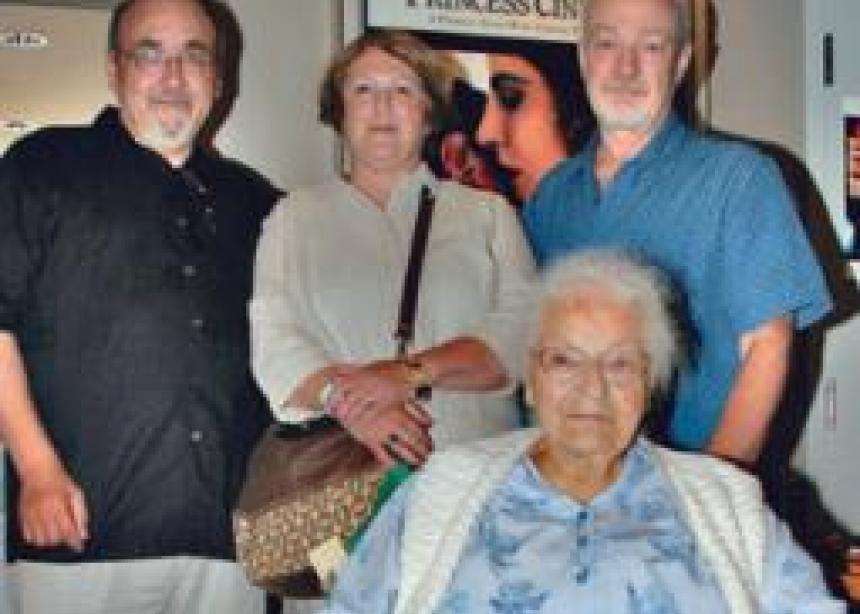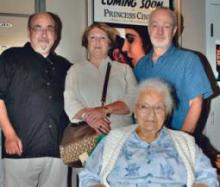Funeral services were held Sunday, Sept. 23, for Elsie Cressman, former Eastern Mennonite Missions worker in East Africa, who died Sept. 11, in New Hamburg. Cressman was known for her work among leprosy patients and her work as a midwife both in East Africa and in Canada.
A graduate of Goshen College, Cressman went to Tanganyika (now Tanzania) aboard the Queen Mary in 1954 with the charge to set up a leprosy hospital, along with living accommodations for patients and staff. In the 1950s leprosy was rampant in that region and there was a great social stigma attached to those with the disease.
The hospital Cressman established eventually served about 400 patients. In a 2010 MetaMedia television documentary about her return to visit Africa as an 86-year-old, Cressman reflected, “I didn’t know what I was getting into, but I really enjoyed it.”
The daughter of a Conservative Mennonite pastor, Cressman was known for her sense of adventure, courage, and for an independent nature, not always playing by the rules for a woman of her generation. Stories abound of her shooting at hippos and snakes, hiking up Mount Kilimanjaro in work shoes, and driving around Africa on a motorcycle.
“It is a place of joy and healing,” Cressman wrote about Shirati Leprosarium in a January 1962 article in the Missionary Messenger. “It is a marvel of God’s grace which gives opportunity for many to know of a Saviour’s love to a sinful people, and gives power to break Satan’s chains and fill lives with the presence of the Holy Spirit.”
Cressman stayed in East Africa for 23 years. After the local community took over the hospital, Cressman went to England for two years of midwife training. When she returned to Africa in the mid-1970s, she went to Rusinga Island in Lake Victoria in Kenya to set up a health center there. She delivered more than 1,000 babies during her time at the clinic.
“Elsie Cressman was a true pioneer,” said Gerry Keener, chief operating officer at EMM. “She was a tireless servant of the Lord. She left behind a remarkable legacy.”
Miriam Housman, who served with Cressman in Shirati, Tanzania, said Cressman was a “role model” to her. “I am the woman I am because of Elsie,” Housman said. Cressman told her and others serving at the hospital to “Get out, learn the language, do things, and interact with people.”
Her zest for life was also evident to Housman. “If there was a rule against having a dog, she had a dog. If there was a rule against having a scooter, she had a scooter.”
“She went where she wanted to go,” Housman said. “Elsie was an independent woman who I admired.”Returning to the Waterloo region of Ontario in 1976, Cressman worked as a midwife until her retirement in 1998. She received the Order of Ontario medal, as the government recognized her instrumental role in midwifery. She attended Grace Mennonite Church in New Hamburg.
Services will be held Sunday, Sept. 23, at the Nith Valley Mennonite Church, New Hamburg, at 3 p.m.
--Sept. 24, 2012



Comments
I cant do her justice - she was a model of Character - so intelligent, so capable, so natural, so good-humoured. A great life
Add new comment
Canadian Mennonite invites comments and encourages constructive discussion about our content. Actual full names (first and last) are required. Comments are moderated and may be edited. They will not appear online until approved and will be posted during business hours. Some comments may be reproduced in print.